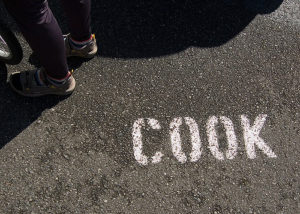On June 26, Weiyun “Kelly” Huang, owner of the fictitious companies, Findream LLC and Sinocontech LLC, was sentenced to 37 months in federal prison for conspiracy to commit visa fraud. Her companies provided false employment verification records to foreign nationals seeking F-1 or H-1B visa status.
The U.S. Immigration & Customs Enforcement (ICE) played a key role in the investigation, which created ripple effects on persons who received F-1 or H-1B work authorization by using a job offer letter, payroll records or other employment verification documents from Findream or Sinocontech.
F-1 and H-1B Work Authorization Requires Legitimate Employment
An F-1 visa allows an international student to study in the United States at a university or other academic institution. F students may engage in practical training during their academic program or after it ends. Curricular Practical Training (CPT) and Optional Practical Training (OPT) are the two types of training that provide work experience related to the field of study.
Eligible students may apply for up to 12 months of OPT employment authorization before completing their academic studies (pre-completion) and/or after completing their academic studies (post-completion). All periods of pre-completion OPT, however, are deducted from the available period of post-completion OPT.
The OPT employment can be part time (at least 20 hours per week on post-completion OPT) or full time; involve multiple short-term employers, contract work, self-employment, or agency work; and be paid or unpaid (as a volunteer or intern, as long as labor laws are not violated). The student must report all employment to their Designated School Official (DSO) to maintain status.
While a job offer is not required to apply for OPT, the student may not have a cumulative total of 90 days of unemployment during the 12-month OPT period. Otherwise, they fall out of status and no longer qualify for a change or extension of status.
Students may apply for an additional 24 months of OPT if they have a degree and are employed in a STEM (Science, Technology, Engineering or Mathematics) field. An additional 60 days of unemployment is allowed during the 24-month extension, which means the student may be unemployed for a total of 150 days (i.e. 90 + 60 days) during the entire OPT, 36-month period. Exceeding 60 days of unemployment during STEM OPT means the student is out of status and is ineligible for a change or extension of status.
For the 24-month STEM OPT extension, the DSO requires the student to have an existing job offer from a U.S. employer and to submit a completed Form I-983 (training plan) that is signed by the student and employer.
Section 3 to Section 6 on the Form I-983 requests information on the company, the agreed-upon practical training schedule and compensation, and the formal training plan, respectively. Unlike regular OPT employment, STEM OPT employment must be paid.
An H-1B visa allows U.S.-based employers to temporarily employ foreign nationals in specialty occupations. Foreign nationals with H-1B status may stay in the U.S. for three years, with the possibility of extending their stay for a total of six years. H-1B status may be extended beyond the six-year limit in certain situations, such as when 365 days or more have passed since the filing of an application for labor certification or immigrant petition (Form I-140) for the beneficiary.
F-1 students with a timely filed H-1B petition and change of status request, and whose F-1 employment authorization will expire before the change of status to H-1B occurs (typically October 1), may be eligible for a cap-gap extension in the United States. In many cases, the OPT employment or STEM OPT employment is what allows the F-1 student to change to H-1B status without departing for visa processing at the U.S. Consulate.
ICE Investigations of Work Permit Fraud Schemes Continue
ICE’s crackdown on F-1 and H-1B visa fraud schemes spell trouble for international students and foreign national workers who use fake job offers to obtain F-1 OPT, F-1 STEM OPT, F-1 CPT, or H-1B status.
ICE may conduct on-site visits to confirm the visa holder is actually working for the employer and performing the appropriate duties. When little-known companies like Findream and Sinocontech show a high number of F-1 OPT and STEM OPT workers, this can prompt further investigation.
In March 2019, the United States filed a criminal complaint against the owner of Findream, with an affidavit from an FBI Special Agent stating it was a company on paper only, with no actual physical presence, and was created for the purpose of providing false verifications of employment to F-1 visa holders seeking to extend their stay in the U.S. via the OPT program.
The indictment stated that Huang advertised Findream as a “startup company in technology services and consulting,” with clients in China and the U.S. She used a China-based website, “Chinese Looking for Job,” and a China-based WeChat platform, “Job Hunters of North America,” to advertise Findream and Sinocontech to F-1 visa holders in the U.S. seeking employment and H-1B visas.
The companies did not deliver any technology or consulting services, or employ any of the individuals who responded to the ads, the indictment stated. In exchange for a fee, Huang and the companies provided job offer letters and employment verification letters as proof of employment, the charges alleged. Falsified payroll records and tax forms were also said to be provided.
According to the indictment, the fraud scheme allowed at least 2,685 customers to list Findream or Sinocontech as their employer to extend their F-1 status. Subsequently, many F-1 and H-1B visa holders, particularly from China, had their visas revoked or denied or were refused entry to the United States (following travel abroad) because they had listed Findream or Sinocontech to receive work authorization.
These types of ICE investigations are ongoing. Recent reports indicate that F-1 students, most from India, have received notifications from U.S. Consulates that their visas have been revoked because they used job offer letters from Integra Technologies LLC and AZTech Technologies LLC to obtain OPT, STEM OPT and, in some cases, CPT work permits.
Through consultations with applicants, we have learned that F-1 and H-1B visa holders, most from India and China, are being refused admission at the U.S. port of entry if they previously held work authorization by association with suspicious companies, such as Integra Technologies, AZTech Technologies, and Tellon Trading, Inc. Expedited removal orders and lifetime inadmissibility charges of fraud or misrepresentation are being made by CBP for this reason.
Data from ICE shows that Integra Technologies, AZTech Technologies, and Tellon Trading were 2nd, 6th, and 10th respectively, on the list of Top 200 Employers for OPT and STEM OPT Students, which includes well-known companies like Amazon, Intel, Google, Microsoft, Deloitte, Facebook and Apple. (NOTE: At least two other companies, Wireclass and Aandwill LLC, have been linked with Integra and AzTech.)
Fraud or Willful Misrepresentation of Material Fact to Obtain U.S. Immigration Benefits is a Permanent Inadmissibility Ground
Federal agencies including ICE and USCIS have made it a priority to deter and detect immigration fraud and have increased site visits, interviews, and investigations of petitioners who use the F-1 OPT and H-1B visa programs. One reason is to protect the “many American workers who are as qualified, willing, and deserving to work in these fields have been ignored or unfairly disadvantaged,” according to the agencies.
Submitting a bogus job offer letter, employment verification letter, payroll records or other documents to maintain or obtain F-1 or H-1B status creates the risk of a visa revocation or visa refusal. It may also lead to the denial of admission and an expedited removal order at the U.S. port of entry.
Whether the F-1 or H-1B visa holder knowingly pays a company for false employment verification is sometimes unclear. The pattern involves the company initiating contact with the beneficiary and requesting payment of a “training fee” at the outset. The job offer or training program might seem real in the beginning. But at some point, it becomes obvious there is no real job.
Persons who claim to have a legitimate job offer to gain an F-1 extension or H-1B status — when there is actually no job — are subject to being found permanently inadmissible. When you present false employment verification records to show you performed job duties and got paid for such duties (in order to receive a visa or lawful status in the United States) you risk being charged with a lifetime inadmissibility ban under INA 212(a)(6)(C)(i)(fraud or willful misrepresentation of material facts to gain U.S. immigration benefits).
In unique situations, the person may challenge a section 212(a)(6)(C)(i) bar by filing a formal motion to reconsider with the appropriate agency, such as CBP or the U.S. Consulate. In most cases, the person will need a 212(d)(3) nonimmigrant waiver or Form I-601/INA 212(i) immigrant waiver.
The 212(d)(3) waiver has relatively flexible eligibility standards, which includes addressing the risk of harm to society if the person is admitted to the United States, the magnitude of the U.S. immigration violation that caused the inadmissibility, and the importance of seeking the visa. The Form I-601 waiver has stricter requirements because the person must have a qualifying relative (U.S. citizen or permanent resident spouse or parent) who will suffer extreme hardship if the person is not admitted to the United States.
If you are caught up in or benefited from an F-1 or H-1B visa fraud scheme, consult a qualified U.S. immigration attorney to discuss possible remedies. Ongoing and willful participation in the scheme might seem like a victimless offense, but it carries serious and permanent U.S. immigration consequences.
###
This article provides general information only. It is based on law, regulations and policy that are subject to change. Do not consider it as legal advice for any individual case or situation. Each legal case is different and case examples do not constitute a prediction or guarantee of success or failure in any other case. The sharing or receipt of this information does not create an attorney-client relationship.

 If you had a baby in the United States, made frequent/extended trips to the country, or applied for a change in immigration status during a prior stay as a visitor, you may be stopped from entering the U.S., even though these activities are not strictly prohibited.
If you had a baby in the United States, made frequent/extended trips to the country, or applied for a change in immigration status during a prior stay as a visitor, you may be stopped from entering the U.S., even though these activities are not strictly prohibited.
 B-1 visas are issued to personal or domestic employees to accompany or follow to join their employers to the U.S. and provide household services for them. These include cooks, butlers, chauffeurs, housemaids, valets, footmen, nannies, au pairs, mothers’ helpers, gardeners, and paid companions. The employer must be a U.S. citizen living abroad, a U.S. citizen on temporary assignment in the U.S., a person in nonimmigrant status, or a lawful permanent resident.
B-1 visas are issued to personal or domestic employees to accompany or follow to join their employers to the U.S. and provide household services for them. These include cooks, butlers, chauffeurs, housemaids, valets, footmen, nannies, au pairs, mothers’ helpers, gardeners, and paid companions. The employer must be a U.S. citizen living abroad, a U.S. citizen on temporary assignment in the U.S., a person in nonimmigrant status, or a lawful permanent resident.